As soon as you decide to visit one country in Southeast Asia, the planning can quickly snowball. You look at the map and think, Wow, look at them all bunched together like that! And before you know it, you’ve built an itinerary that hops through eight different countries, changing locations every couple of days.
That’s how our planning started. We knew Vietnam, India, and Japan were non-negotiables, and at a glance, it felt totally doable to squeeze in the rest over 4.5 months. And technically… we could have! But once we started digging into the nitty-gritty logistics, we realized that cramming it all in would go against everything we learned about how we like to travel during our Euroyear last year: we prefer depth over breadth, and too much bouncing around exhausts us.
So the chop began. It wasn’t easy, and we constantly second-guessed our choices, but we kept reminding ourselves—this won’t be our last trip to Asia. One place we kept coming back to was Cambodia. Of all the Southeast Asian countries, Cambodia felt like the one we’d heard and known the least about. That in itself intrigued us. And once we started reading about the Angkor temples, we were hooked. The more we read, the more sold we were—and eventually, we chose Cambodia as our spot between Vietnam and India.
We spent seven days in Cambodia. It wasn’t enough. (It never is, we’re learning!) We’d originally planned to split the week between temple-hopping in Siem Reap and some island time, but—lesson learned—we dropped the beach in favor of more time with the temples. We ended up spending five days in Siem Reap and two in Phnom Penh, where we flew out. Here are eight thoughts after those seven days…
Oooh ok yes this is hot.
I hate to spend any of this precious blog space talking about the weather—how boring!—but I have to, because it really impacted our week. It was hot. As literally every single person warned us it would be. The temperature itself wasn’t anything outrageous, but the humidity was the real killer—usually around 75–85%.
It reminded us so much of living in New Orleans, but we kept asking ourselves, Wait… was it actually like this?? Funny how quickly our bodies forget. And honestly, even after years in Nola, I don’t think I ever truly got used to that kind of humidity. Sure, we adjusted to the hot months lifestyle—shorter outdoor time, constant sweat, a low hum of exhaustion, a sweet camaraderie amongst those sticking it out—but my body never really felt comfortable in it. I don’t think I ever started sweating less. And we certainly didn’t adjust in our quick seven days in Cambodia.
The real bummer was that we were there to explore the temples—an entirely outdoor activity. We tried not to let the heat impact our agenda or spirits too much, but I’ll be honest—it was hard. We were soaked through about 30 minutes after stepping outside and stayed sticky and heavy-feeling until we got back to some AC or a shower. And we were tired. We had way less energy for adventuring than we’re used to. (Might’ve been that we were a little sick too—more on that later…)
So yes, it was hot. And that kind of sucked. But it was also the start of rainy season, so we were at least blessed with some cloud cover to block the sun and cooling late afternoon showers. Could always be worse 🙂
The temples are worth the hype.
The Angkor temples fall into that category of super-hyped, tourist-heavy experiences that usually make us nervous, and that we often opt to skip. But, just like we did many times in Europe, we dug into reading, researching, and weighing whether the potential crowds were worth it. We decided to go for it, and I’m so glad we did, because wowEEEEE. Even in the oppressive heat and with small crowds (thanks low season!), the temples were absolutely incredible. Awe-inspiring. I couldn’t get over the scale of them, or the intricate, ornate details that have somehow lasted over a thousand years.
We visited seven temples—barely scratching the surface once you realize just how many are out there. My top three favorites were Ta Nei, Ta Prohm, and Pre Rup.
Ta Nei was a small, crumbling temple hidden in the jungle. We arrived by mountain bike with our guide and found ourselves completely alone there—it was positively spooky. I loved wandering through heaps of mossy stones, spotting detailed carvings still clinging to life, all surrounded by massive trees.
Ta Prohm, made famous by Tomb Raider, was incredible. Giant trees erupt from the temple walls, with roots spilling out in every direction. Also spooky! And very cool.
Pre Rup was the last temple we visited and a special one because, like Ta Nei, we had it completely to ourselves. Silence and stillness really suit the temples. When you’re walking around alone, it’s so much easier to imagine the spiritual power these places once held for the communities who used them. A stark contrast to weaving through crowds at spots like Angkor Wat and Banteay Srei—both amazing in their own right, but definitely less peaceful.
So yes, while it wasn’t the most comfortable or easeful week, the temples were more than worth it—and I’d recommend them to anyone considering a trip to Cambodia and everyone who’s not. I do wonder what the best time of year to go is. High season sounds overwhelming with the crowds, but the heat during low season definitely took a toll on our experience. Maybe there’s no perfect time. That said… I think we’d still choose heat over crowds…
Siem Reap: a tourist town that still feels real.
Siem Reap—the town that serves as home base for temple exploration—was another place we were a little wary of. We knew it was small and touristy, built up for Angkor temple-goers. We were worried it might feel void of any real, authentic local charm, but we were actually pleasantly surprised.
Yes, there were touristy, westernized restaurants and areas, but overall, it felt like a really nice blend of travelers—both Western and Cambodian—and locals. It was down-to-earth and, in a way, beautifully integrated. We stayed a bit outside of the downtown area, along a road lined with street food stands, convenience stores, and local shops selling clothes and home goods.
I hate to keep using this buzzword, but it all just felt very… local. Like we were actually surrounded by Cambodian people living there—not just catering to tourists passing through.
The rats are the real heros!
One of the best things we did all week was visit the APOPO Visitor Center. APOPO is a nonprofit that trains African giant pouched rats—nicknamed “hero rats”—to safely and efficiently detect landmines. Their work helps communities in post-conflict regions reclaim land, prevent injuries, and improve public health.
APOPO has been operating in Cambodia since 2014, helping to clear landmines and other explosives left behind from decades of war. Here’s a bit of context from their website:
“According to the Landmine Monitor, Cambodia is one of the most mine-affected countries in the world with over 1, 000 km² of land surface still contaminated by landmines. It is estimated that many hundreds of thousands of landmines and other explosives continue to litter the countryside, presenting a major humanitarian and socioeconomic challenge. With over 40,000 amputees Cambodia has the highest ratio of mine amputees per capita in the world.”
Hero rats are far more efficient than human deminers using metal detectors, which have historically been the go-to method. The rats are trained to sniff out TNT—the explosive compound found in many landmines—only, whereas metal detectors pick up any metal, including harmless scrap. That makes the process much slower and more complicated for humans. Plus, hero rats are so light they can walk right over live landmines without triggering them. Safe, smart, and incredibly effective.
It would take a human deminer with a metal detector four days to clear an area the size of a tennis court. It takes a hero rat 30 minutes! We got to see a hero rat in action at the visitor center and it was pretty incredible. His name was Glen and he found the fake landmine buried in a sandpit quickly and effortlessly. Then he got a banana treat and it was really cute. Thank you Glen!!
Since they began working in Cambodia, APOPO and their hero rats (and dogs!) have destroyed over 50,000 explosives, returning over 25 square miles of safe land (about the size of San Francisco) to local communities. Demining land is a slow and expensive process, and they’ve still got a ways to go, but these little rats have proven to be absolutely game changing for the process and thus, the health and safety of the Cambodian people.
If you want to learn more about the amazing work APOPO is doing around the world or support them with a donation, check their website here.
A silly circus for serious good.
Another unexpected favorite of the week was attending the Phare circus. It’s one of the first things that pops up when you search for things to do in Siem Reap, and at first we scrolled past. I wouldn’t say we think of ourselves as circus people. But when our food tour guide gave it a glowing recommendation and mentioned all the good work the organization is doing, we were intrigued. After taking a closer look we learned it was another incredible organization.
Phare is a social enterprise that provides well-paying jobs to graduates of Phare Ponleu Selpak, a nonprofit arts school based in Battambang, Cambodia. The school owns a majority stake in the circus, and profits go directly back into funding its programs.
Phare Ponleu Selpak was born in the 1980s, during the aftermath of Cambodia’s long years of conflict, which had devastated the country’s artistic traditions. A French humanitarian began teaching art to children in a refugee camp on the Thai-Cambodian border. When the camp closed, she and her students continued the work by founding a school. Over the past 30 years, that school has grown into a thriving nonprofit offering arts education, formal schooling, and social support to children, young adults, and their families—helping to rebuild lives and preserve culture.
We were sold, and happily bought tickets to their current show. The performance was a mix of skits and acrobatics that depicted everyday Cambodian life—like a rainstorm—and how locals vs. tourists respond (very fitting!).
The acrobats—much like the rats, but also very different in every way—were incredible. I don’t remember the last time I saw an acrobat show (if ever?), and I was floored by their strength, skill, and creativity. We didn’t necessarily follow every skit perfectly, but the physical storytelling and sheer talent were more than enough.
Again, if you want to learn more or donate, check out their site here.


Noms worth searching for.
During our first couple of days in Cambodia, we were still mourning the end of our five weeks of Vietnamese food bliss. And to be honest, we couldn’t quite figure Cambodian food out. We were on the hunt for authentic local specialties, but the few places we tried on our own all seemed to have the same menu—touting the same three “famous” dishes—and nothing really wowed us.
Luckily, we were able to book a food tour last-minute, and it totally changed our tune. We spent an evening walking and tuk-tuking around with our guide—an expat from Massachusetts who’s been living in Cambodia for 15 years—and three other travelers. We tried dish after dish, and each one felt unique, flavorful, and special.
That night, we learned the secret ingredient of Cambodian cuisine: prahok. Prahok is a fermented fish paste used in many traditional dishes, either as a flavor base or served on its own (usually mixed with a few other things) as a dip. It’s strong and funky—and often watered down or left out entirely at touristy spots trying to appeal to Western palates. No wonder we were missing the magic!
Varying levels of prahok showed up in many of the dishes we tasted that night, and we loved it. Our favorite was a dish called prahok ktis—a popular ground pork dip seasoned with prahok and finished with coconut milk, served alongside crisp, refreshing raw vegetables for dipping. It was incredibly flavorful and rich, one of those dishes that makes your eyes pop the moment you taste it. This was the Cambodian food we had been looking for. We knew it had to exist, we just needed a little help finding it.

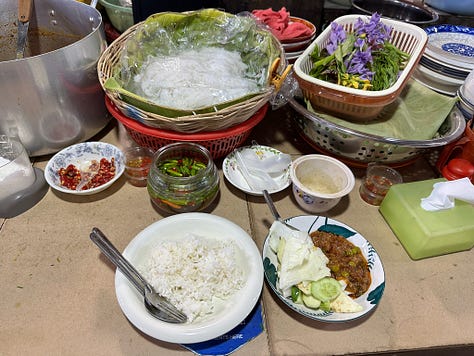

BBQ beef + tongue, prahok ktis, seasonal fruit at the market Rest is good, rest is necessary.
We both arrived in Cambodia with colds—definitely not feeling our physical best. That, plus the heat, forced us to slow down and rest...eventually.
First, on our second day, we decided to do an 8-hour mountain bike trek through the jungle to visit a handful of temples. While sick…in the heat. It was awesome—but also very hard, very hot, and probably not the smartest idea given our less-than-optimal health and energy levels. There were a couple moments that day when I looked at Leo and saw absolutely no soul in his eyes, and I knew: we had pushed too far.
We did survive, and when we finally collapsed onto our beds that night, we vowed to take rest a little more seriously. Full-time travel is a lot—mentally and physically—and this was an important reminder: if we don’t take breaks now and then, our bodies will force us to… and not in a cute way. Heard. 🫡
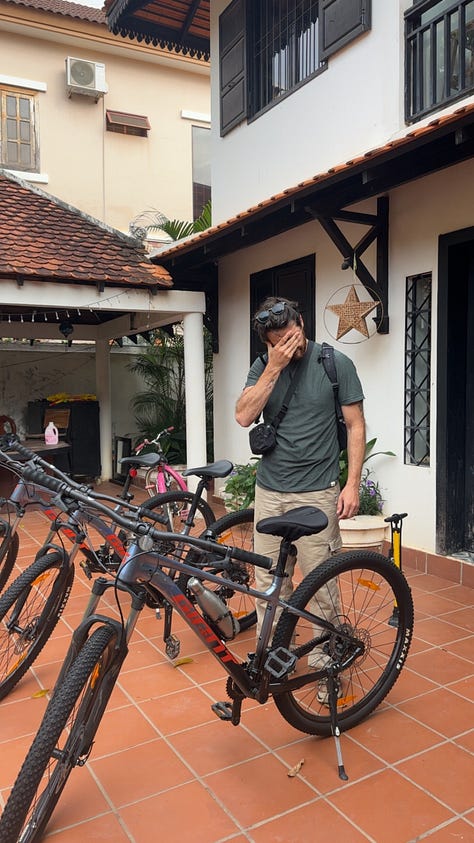


No soul smiles A painful past.
At the end of our week, we headed to Phnom Penh (p’nom pen) for two days. While we didn’t have nearly enough time to truly get to know the city, we really liked the little bit we saw. It felt like a great size—a lively but manageable energy with plenty to see, do, and eat.
But Phnom Penh is also the epicenter of the horrific, somewhat recent, genocidal history in Cambodia. It’s a history we only knew vague whispers of before coming. Learning more felt like an essential part of this trip, so on our one full day in the city, we visited the Tuol Sleng Genocide Museum—the memorial site of the S-21 interrogation and detention center used by the Khmer Rouge regime.
Between 14,000 and 17,000 people were imprisoned at S-21 as so-called traitors to the regime. Most had no idea why they were arrested—many were simply family members of someone being targeted. Only a dozen people are known to have survived. Nearly everyone who passed through was tortured into signing false confessions of crimes they didn’t commit, then sent to the nearby Killing Fields for execution. Entire families were killed alongside the accused, justified by the Khmer Rouge with the haunting phrase: “To destroy the grass, you must also remove the roots.”
The museum is absolutely chilling. You’re routed through the buildings and courtyard with an audio guide that shares the history of the revolution and the prison, along with stories of the atrocities that took place in those very rooms, and the families that were destroyed within them. The guide routinely reminded you to take breaks outside in the eerily peaceful courtyard. We took many.
We spent just under three hours there and left feeling completely drained. We sat in the tuk tuk back to the hotel in silence and remained that way for a while. Words felt heavy and hard and honestly, kind of pointless in that moment.
I’d apologize for ending on such a somber note, but I really believe that learning about histories like this—and sharing that knowledge with our communities—is an essential part of travel. It’s part of our collective responsibility: to remember and honor the lives lost, and to do our part in helping prevent atrocities like this from happening again. (Not sure how well we’re doing on that second one, to be honest.)
The Cambodian people we met were incredibly kind and welcoming. Those we had the joy of talking to seemed genuinely excited to share their history and culture with us. And among the younger generations who came after the genocide—the only ones left—there was a sense of resilience and forward momentum. A quiet hopefulness. I’d consider it a privilege to return someday and spend more time there.
A few more pictures…
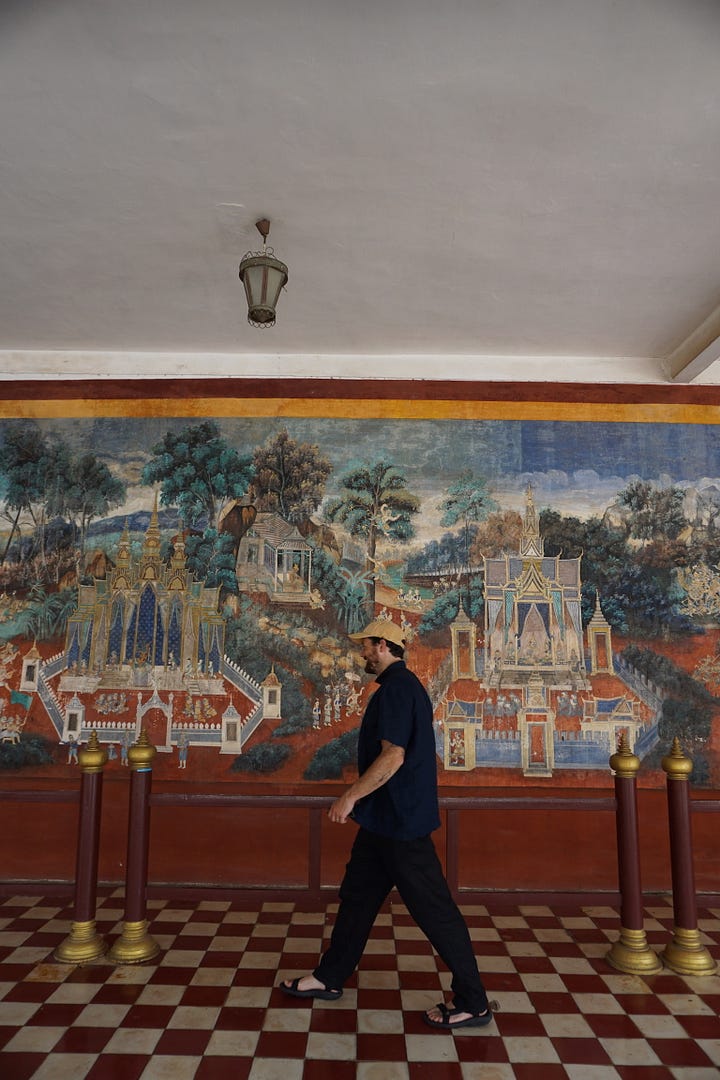

Currently, I’m finishing up my 5th week in India, about to graduate from my 200-hour yoga teacher training in Rishikesh. Leo has been surfing and van-lifeing around southern Japan. In three days we reunite in Korea!! More on aaaaall that eventually. ♥️




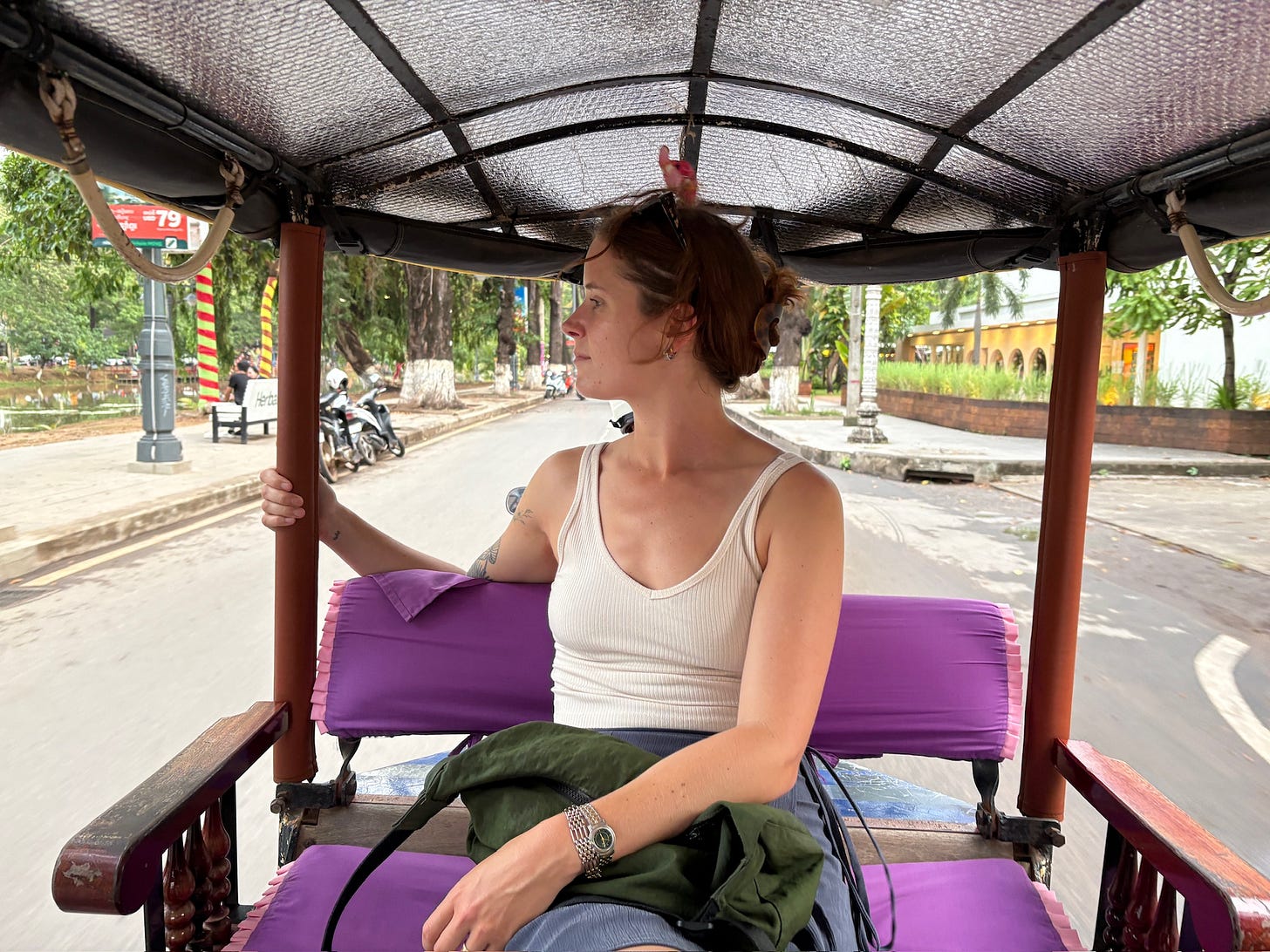
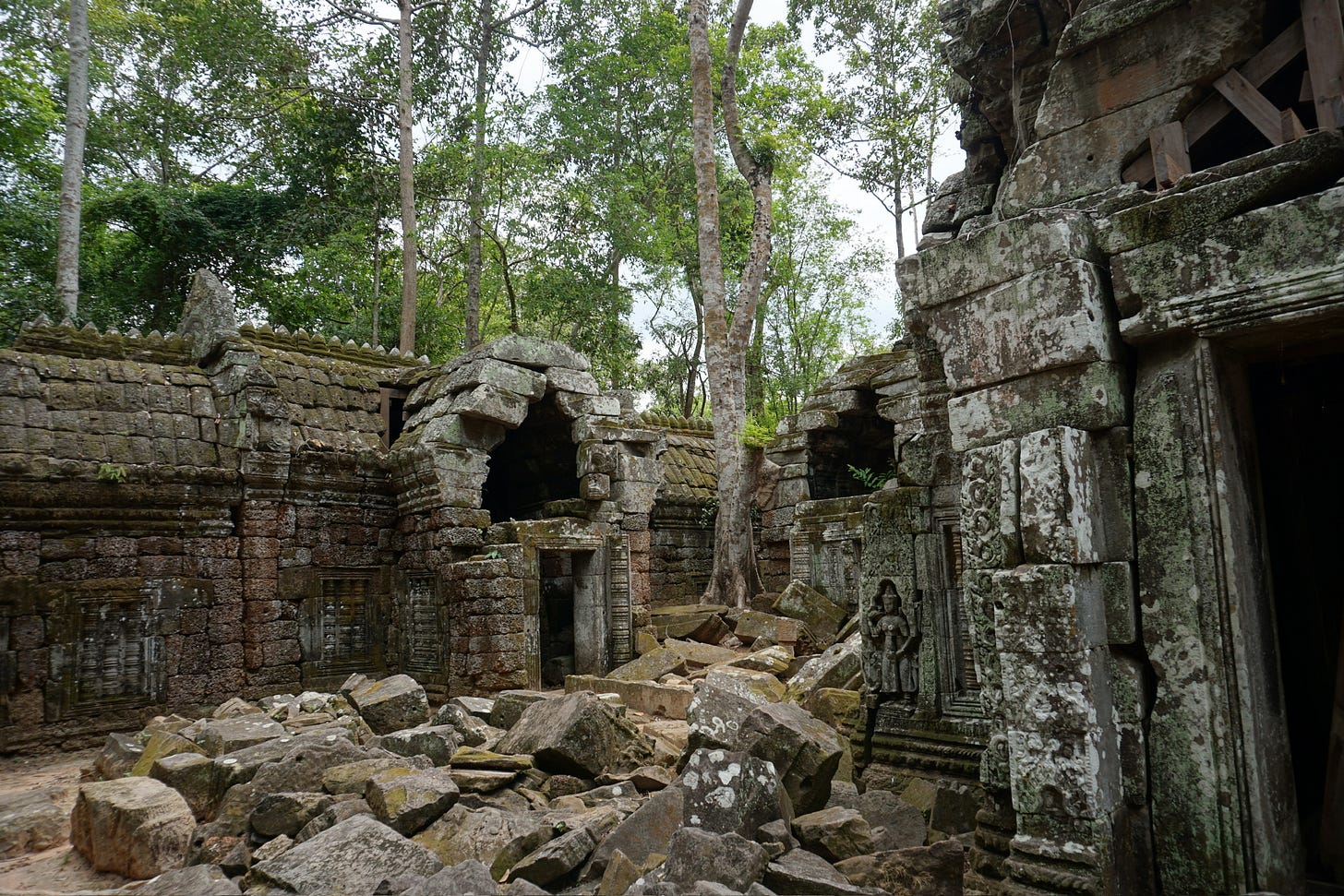
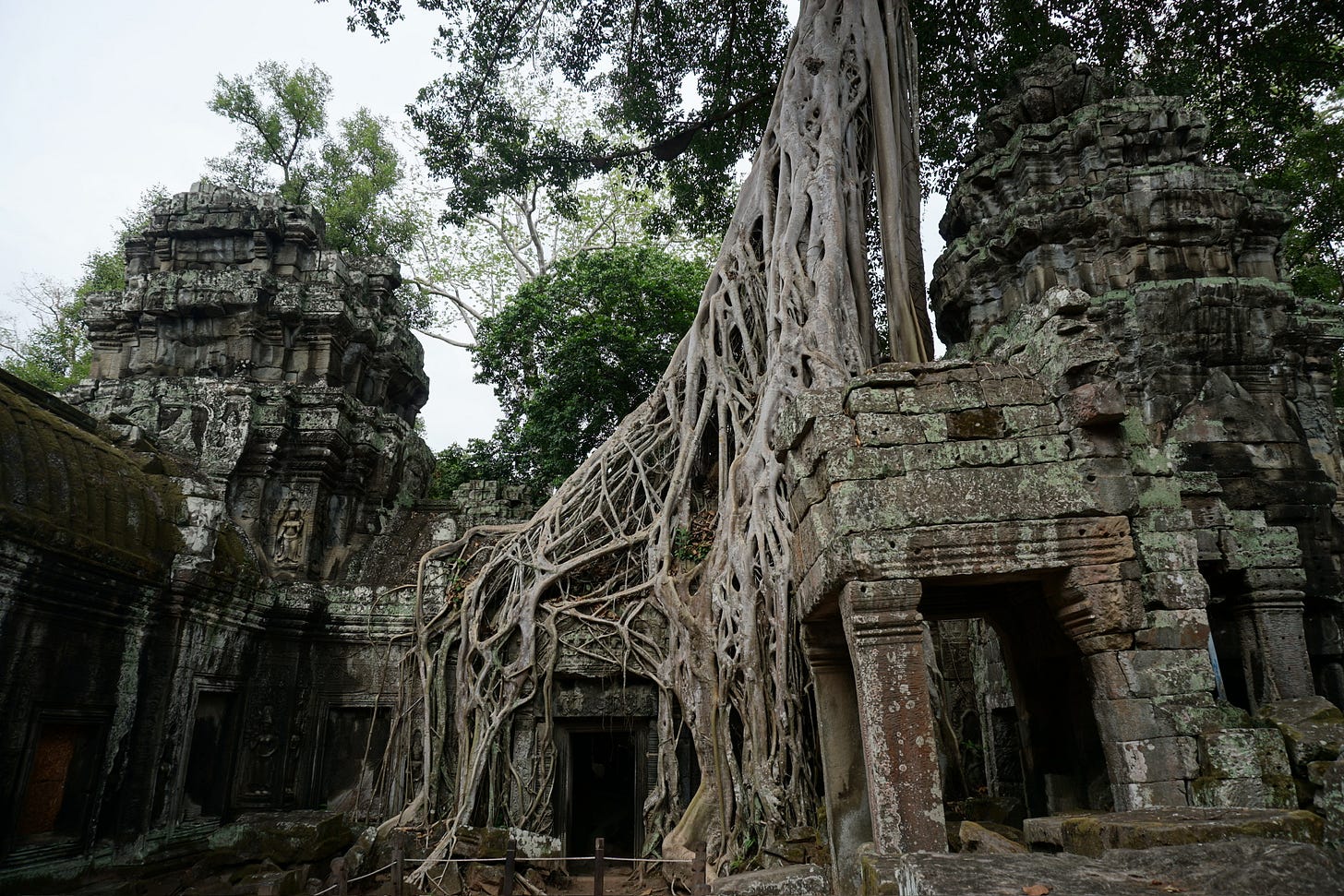
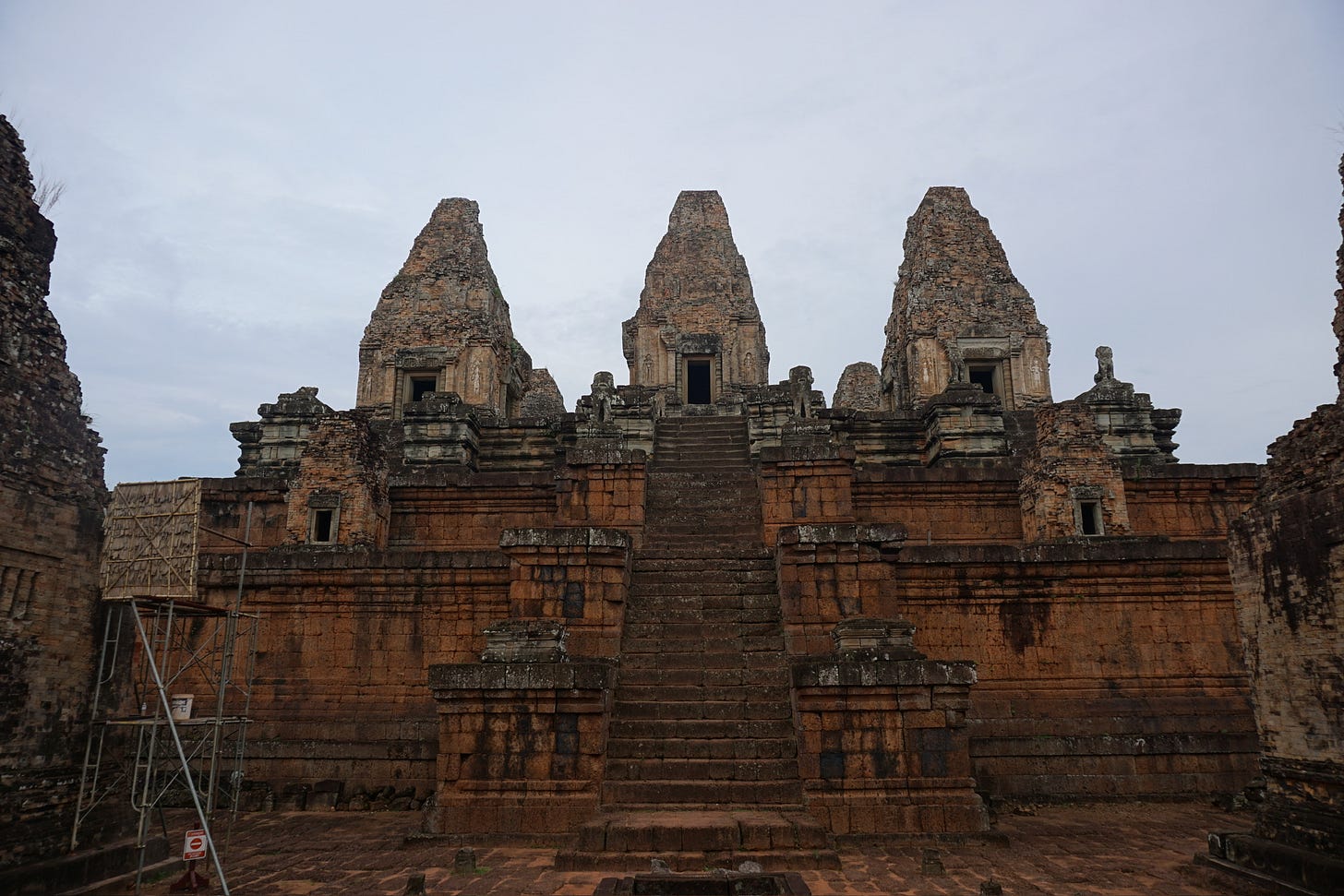
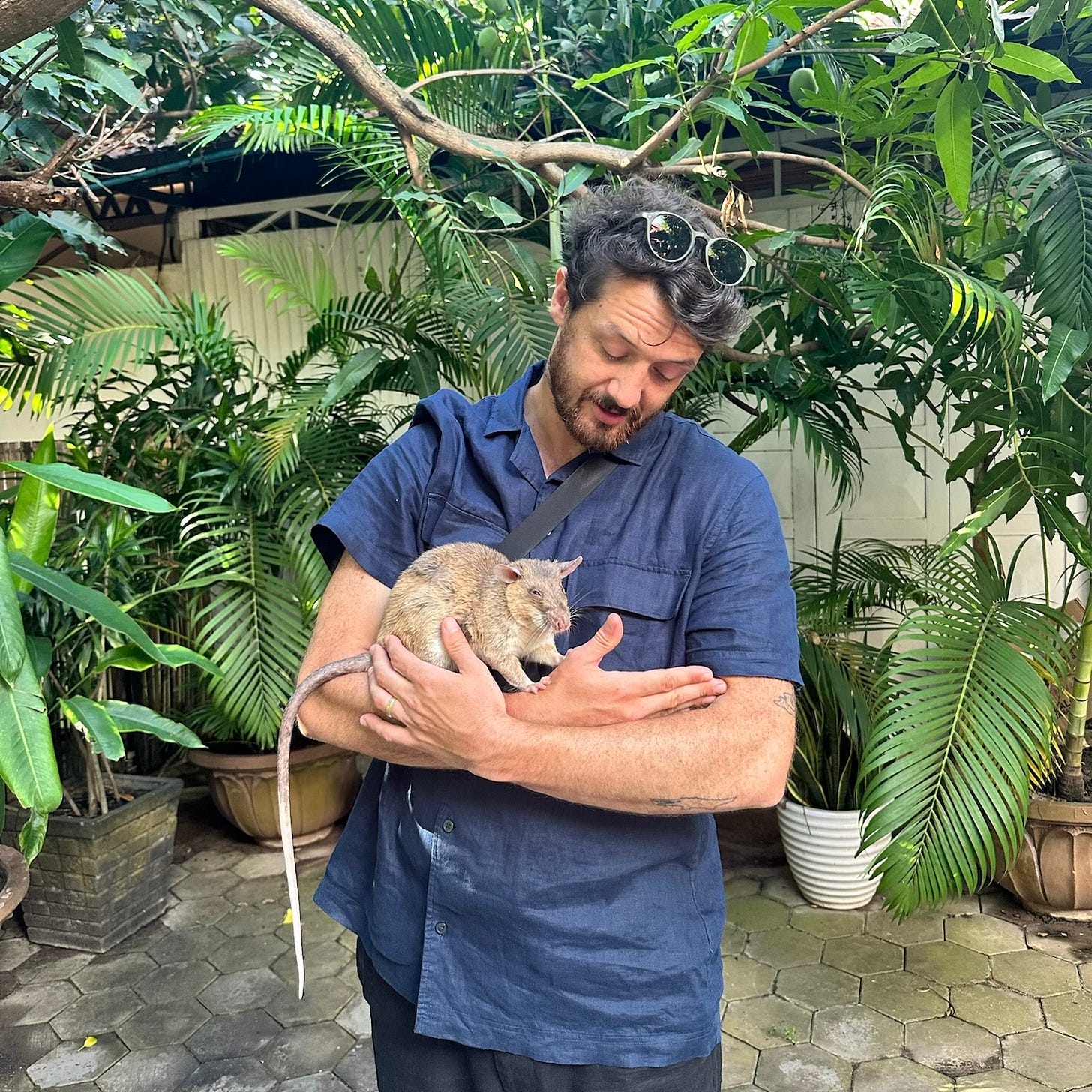
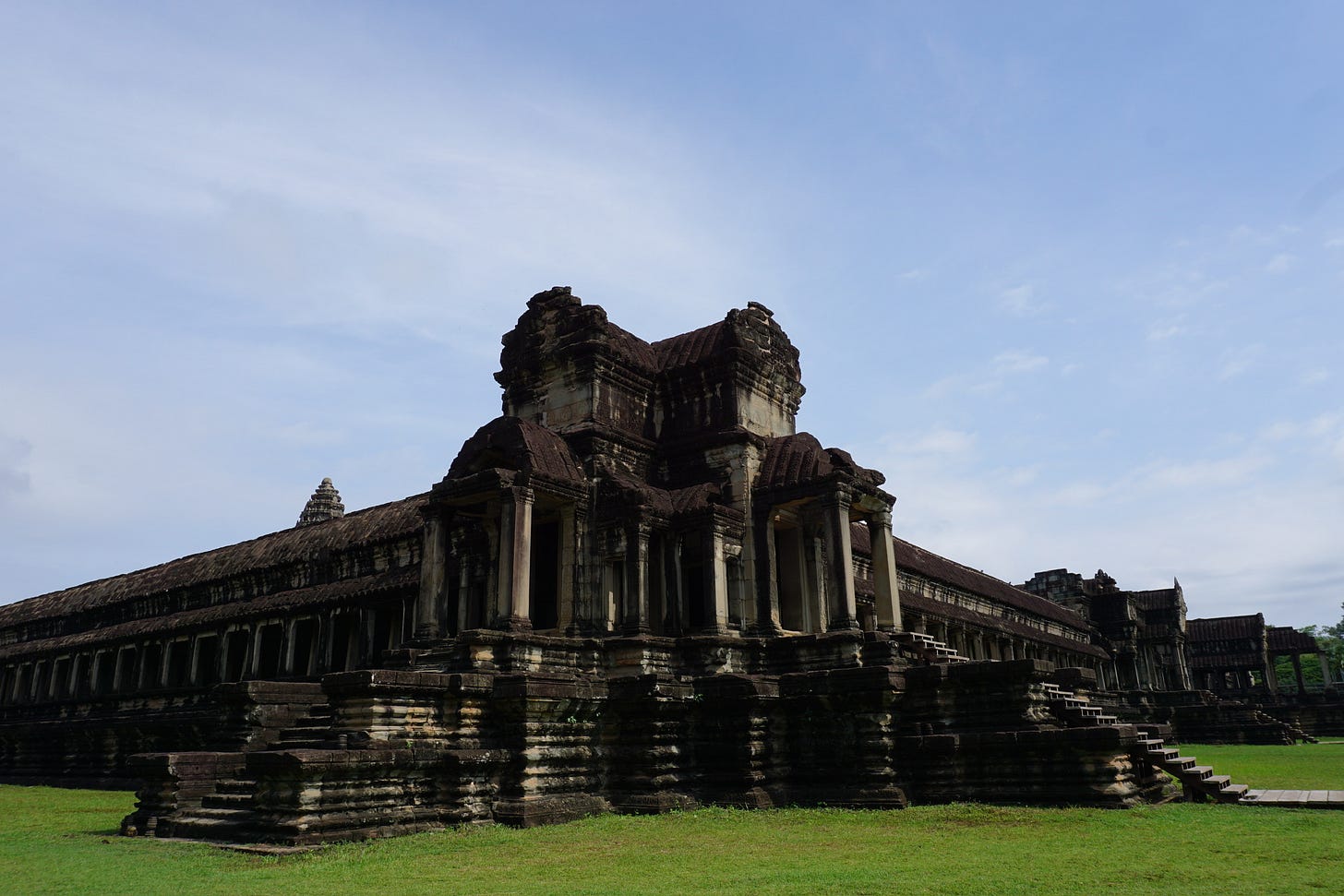

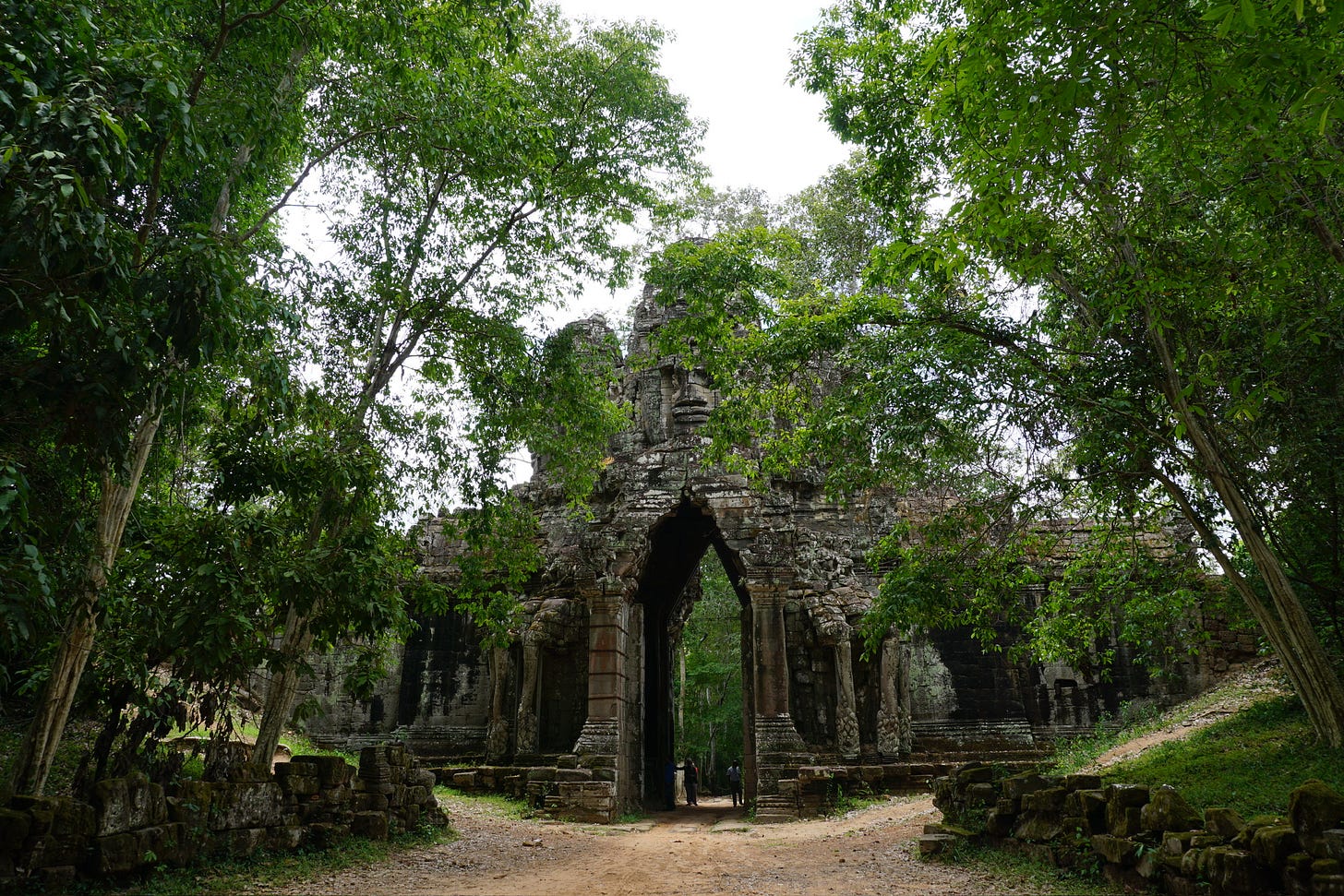
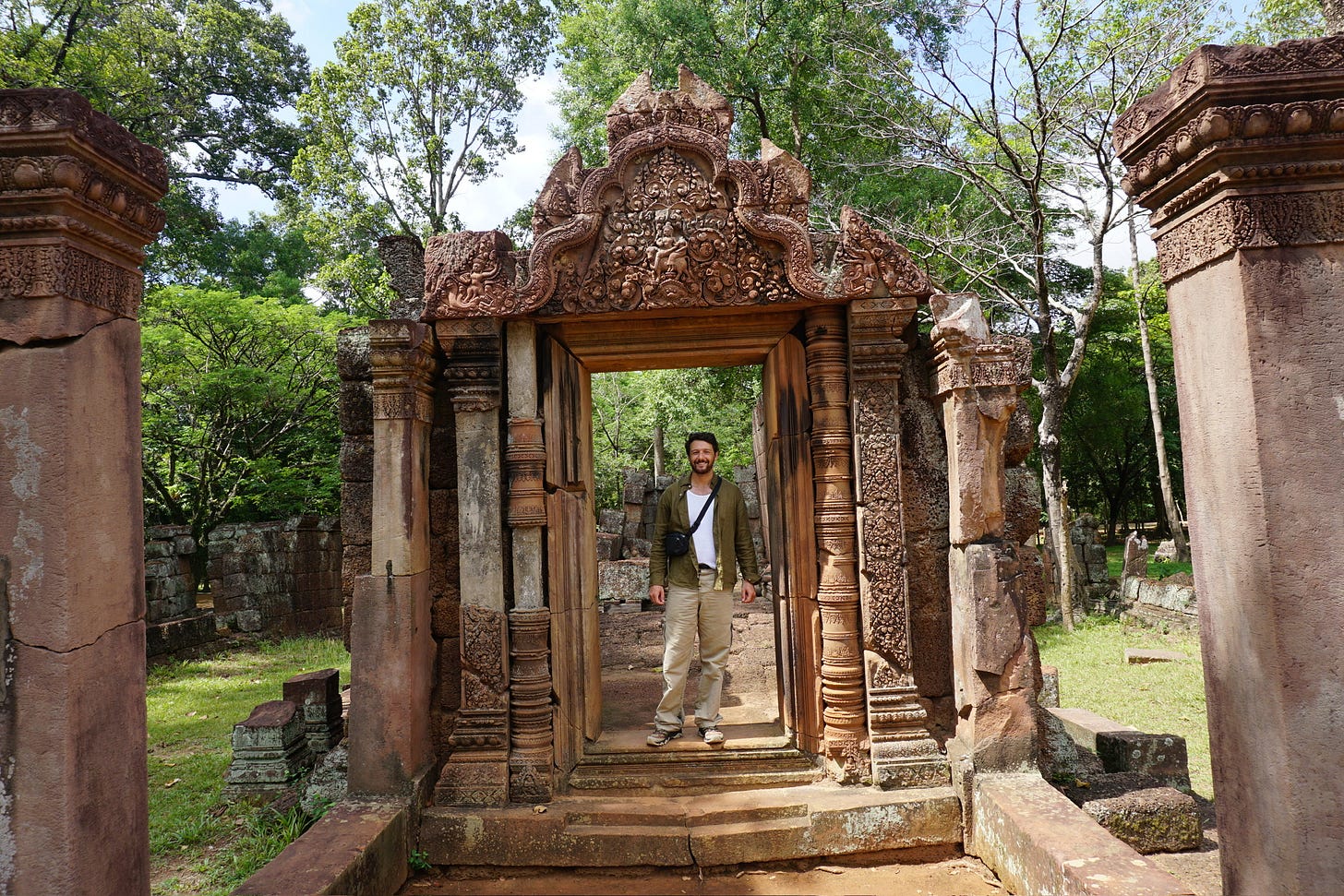

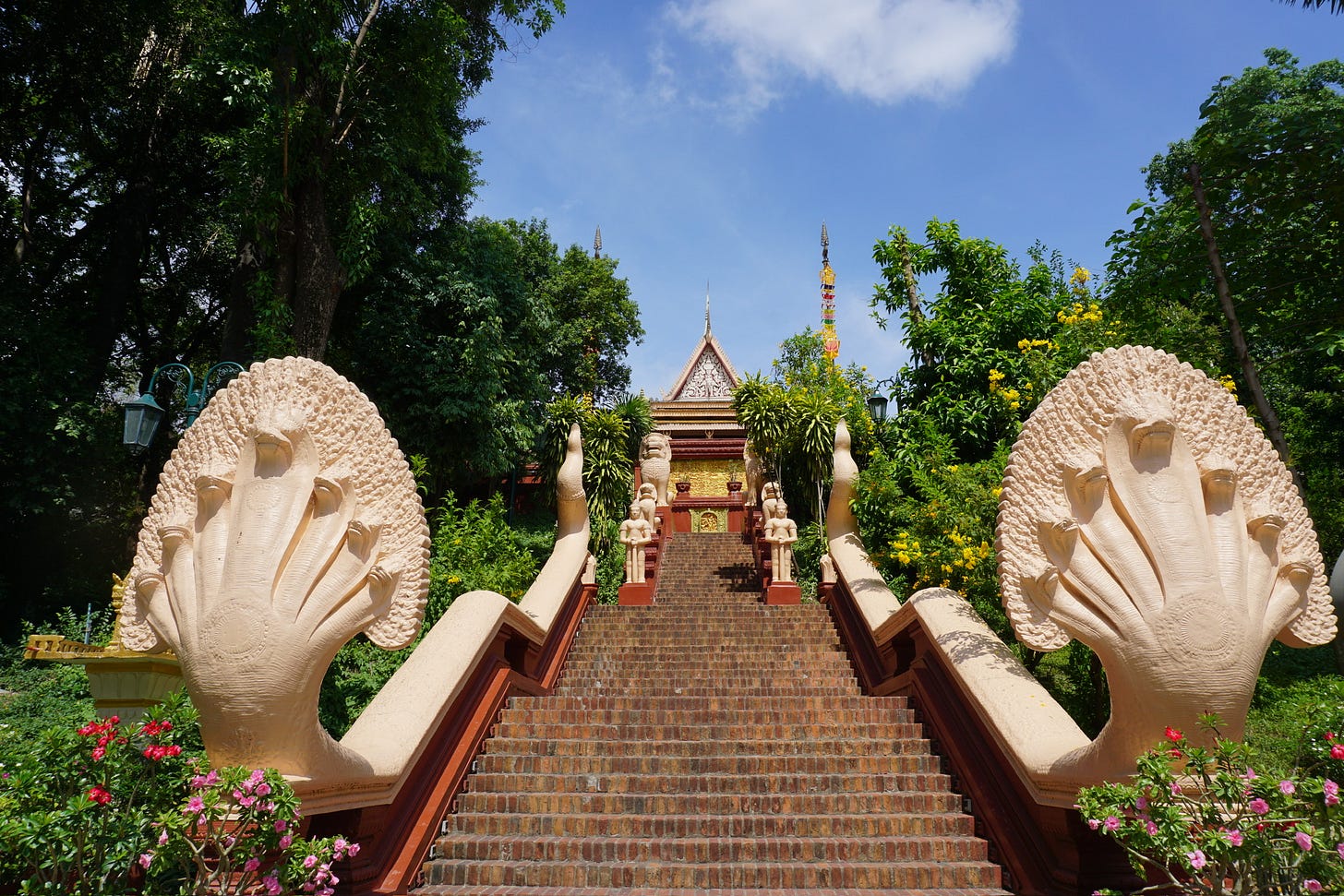
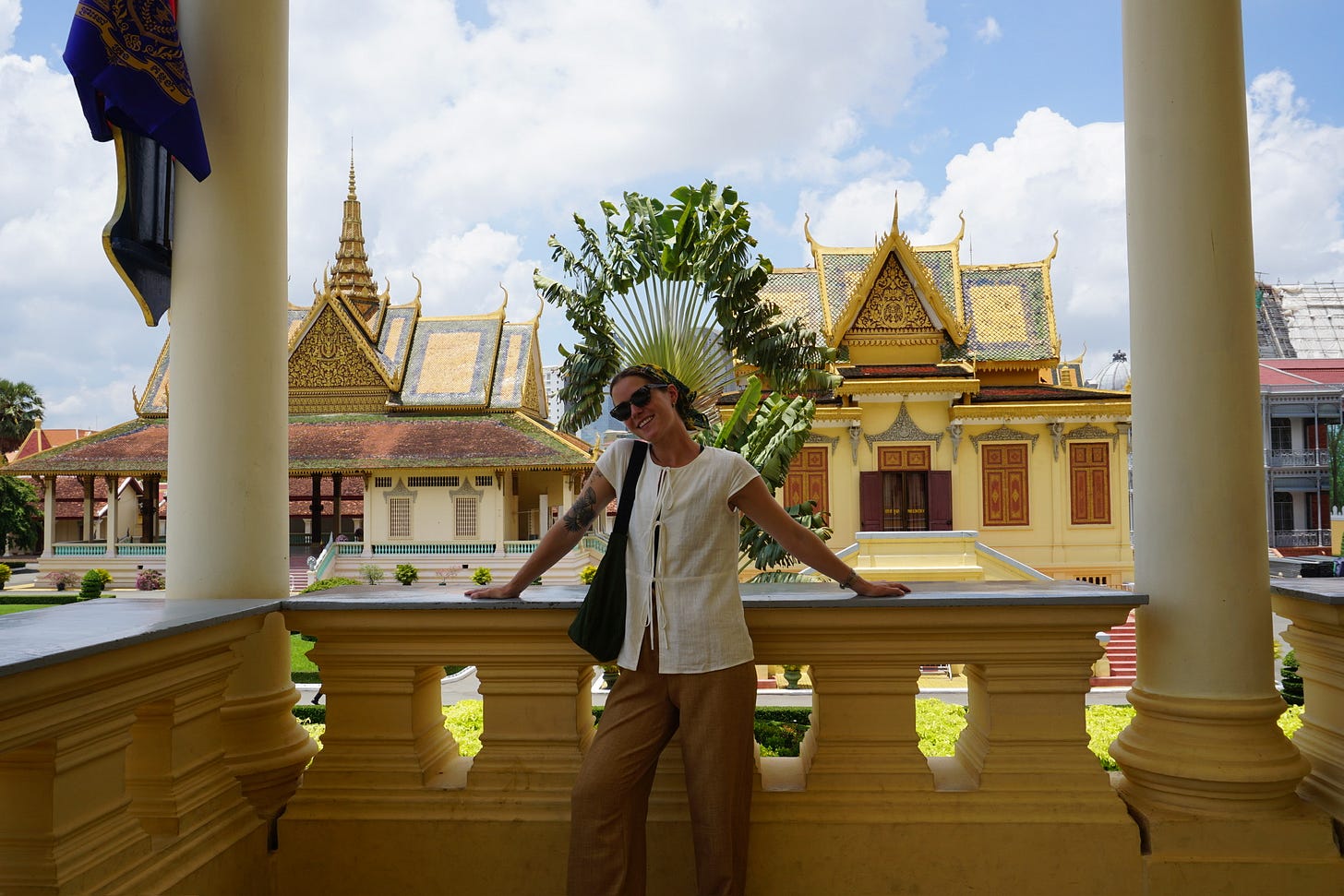
Excellent post! Thank you for sharing all - the good, the bad, the ugly. Especially for writing about the genocide. Difficult to read about, difficult to write about, impossible to comprehend the horror.
Thanks for sharing! We love reading about your experiences. You both are such great travelers!